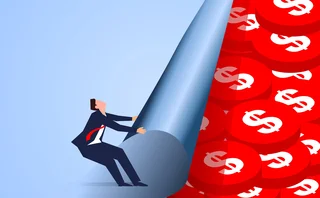
EU bail-in proposal brings big banks back into fashion
Subordinated debt requirement will hit smaller banks hardest
May 25 could turn out to be the start of a quiet revolution for European Union banks. If the blockbuster package of reforms approved by EU finance ministers that day is implemented, the future will belong to the big lenders. At the same time, no bank, whatever its size, will be too big to fail.
That’s the theory, anyway. Although this outcome does not sound bad, the road there will be painful, for some banks in particular.
The proposed reforms to the Bank Recovery and Resolution Directive (BRRD) specify how banks must build controversial buffers of bail-in debt, which could be converted into equity if the firm is placed into resolution, avoiding the need for a public bailout.
The problem is issuing such debt is expensive because investors demand high returns to account for the risk they might never get their initial investment back.
The bank’s size and country of origin play a role in those costs. At the high end, the European Banking Authority has predicted that subordinated debt would cost the same as equity for mid-sized banks that are not large enough to be deemed systemically important by the EBA, as well as for all banks, including the largest lenders, in countries that required international bailouts during the eurozone crisis – namely, Cyprus, Greece, Ireland and Portugal.
What’s more, many banks will struggle to sell enough bail-in bonds to beef up or, in some cases, create the required buffer from scratch. That’s partly because the market for such bonds may be about to shrink dramatically.
The affected institutions will want assurances that supervisors will actually use this discretion. If not, the BRRD II will make banks safe to fail, but prevent many from succeeding
European retail investors have traditionally been significant buyers of banks’ subordinated debt as a way to get more out of their savings, especially in France, Italy, Portugal and Spain. However, banks will probably now target retail customers a lot less, if at all, as product governance rules introduced in January require them to demonstrate that subordinated debt is an appropriate product for amateur investors.
Thirdly, even if banks manage to build up a sufficient bail-in buffer, many will see their net interest margins destroyed as a result. This is a big risk for banks that rely heavily on cheap retail deposits for funding, such as those mid-tier lenders that are not systemically important, many of them based in Italy and Spain. These banks will be forced to expand the liability side of their balance sheets by selling subordinated debt, but might not be able to put that pricey funding to work by, for example, growing their mortgage book.
The BRRD II proposal agreed by finance ministers gives supervisors the freedom to accept a lower bail-in buffer from banks with limited access to capital markets. The equivalent proposal by the European Parliament includes the same wording on discretion.
The affected institutions will want assurances that supervisors will actually use this discretion. If not, the BRRD II will make banks safe to fail, but prevent many from succeeding.
This might be exactly what policymakers want. One European Commission official has already suggested tougher prudential rules could drive more bank consolidation in the EU. The bail-in rules, which put smaller banks at a disadvantage, may well prompt banking mergers and acquisitions.
The result does not have to be a return to ‘too big to fail’ though. If you can make banks systemically safe, no matter their size, then making them big enough to succeed might not be such a bad idea after all.
Editing by Olesya Dmitracova
Only users who have a paid subscription or are part of a corporate subscription are able to print or copy content.
To access these options, along with all other subscription benefits, please contact info@risk.net or view our subscription options here: http://subscriptions.risk.net/subscribe
You are currently unable to print this content. Please contact info@risk.net to find out more.
You are currently unable to copy this content. Please contact info@risk.net to find out more.
Copyright Infopro Digital Limited. All rights reserved.
As outlined in our terms and conditions, https://www.infopro-digital.com/terms-and-conditions/subscriptions/ (point 2.4), printing is limited to a single copy.
If you would like to purchase additional rights please email info@risk.net
Copyright Infopro Digital Limited. All rights reserved.
You may share this content using our article tools. As outlined in our terms and conditions, https://www.infopro-digital.com/terms-and-conditions/subscriptions/ (clause 2.4), an Authorised User may only make one copy of the materials for their own personal use. You must also comply with the restrictions in clause 2.5.
If you would like to purchase additional rights please email info@risk.net
More on Our take
Beware the macro elephant that could stomp on stocks
Macro risks have the potential to shake equities more than investors might be anticipating
Podcast: Piterbarg and Nowaczyk on running better backtests
Quants discuss new way to extract independent samples from correlated datasets
Should trend followers lower their horizons?
August’s volatility blip benefited hedge funds that use short-term trend signals
Low FX vol regime fuels exotics expansion
Interest is growing in the products as a way to squeeze juice out of a flat market
Can pod shops channel ‘organisational alpha’?
The tension between a firm and its managers can drag on returns. So far, there’s no perfect fix
CDS market revamp aims to fix the (de)faults
Proposed makeover for determinations committees tackles concerns over conflicts of interest
BofA quants propose new model for when to hold, when to sell
Closed-form formula helps market-makers optimise exit strategies
Are regulators wrong to think of AT1s as debt?
Bank capital bonds face criticism. One answer might be to treat them as ‘fixed-income equity’








